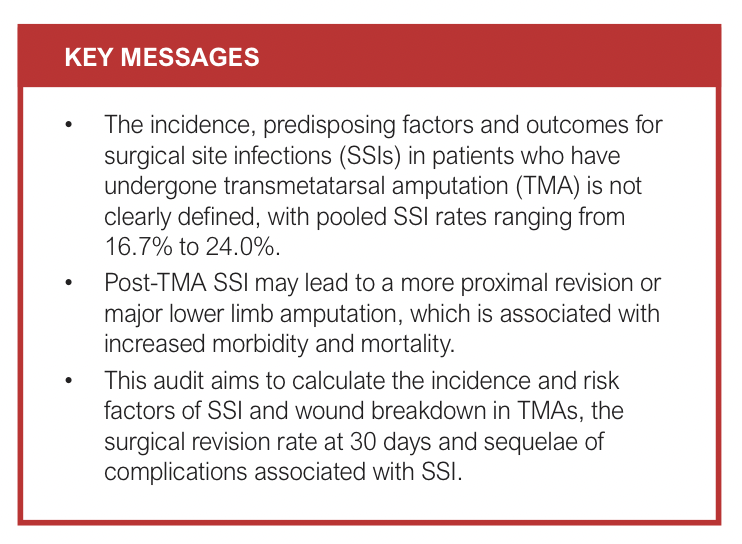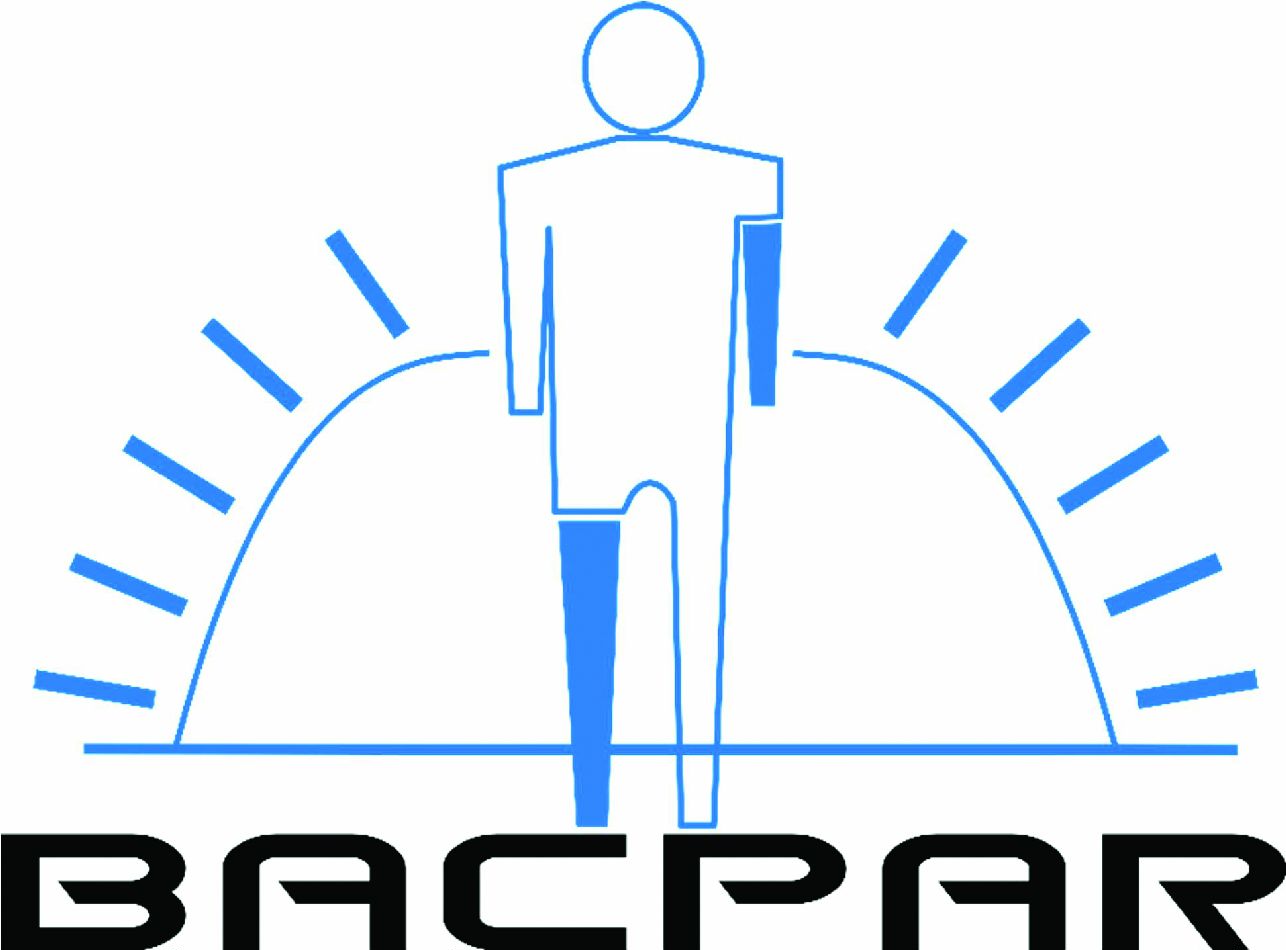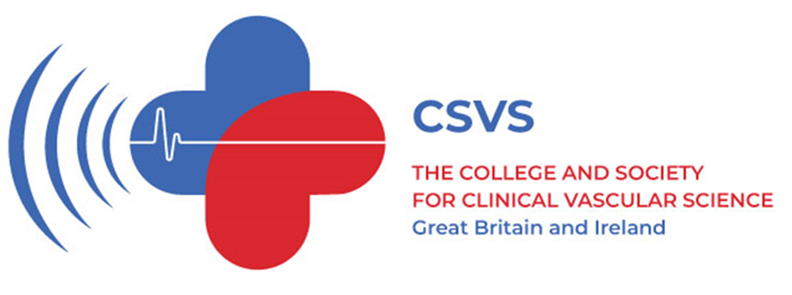PROTOCOL
Surgical Site Infections in Major Lower Limb Amputation – Transmetatarsal Extension (SIMBA-T): an international multicentre audit: study protocol
Alawattegama LH on behalf of the SIMBA-T Study Group*
Plain English Summary
Why we are undertaking this research: Nearly 2,000 people needed an amputation of their foot in England in 2022–23. This meant that they lost all the toes of that foot, but they will still be able to walk. This is most likely due to either poorly-controlled diabetes or blocked or very narrow arteries in their legs. Following amputation, infection in the wound is common. Infection may be treated with simple antibiotics, require more surgery or, at their most severe, result in sepsis, loss of a leg or even death. Unfortunately, we do not really know how common infection after foot amputation is, what makes people at higher risk of getting infection and the result of having infection in the wound. The main concern with infection after a foot amputation is that it might require further amputation higher up the leg (usually below the knee joint) to treat the infection. This means people will stay in hospital for longer and may have to walk with an artificial leg. The purpose of this work is to better understand the causes and consequences of infection in foot amputations so that we can prevent further amputations, shorten hospital stays and ultimately improve patients’ quality of life.
What we aim to do: To find out more about wound infection rates and how to reduce them, we have designed a large study involving multiple centres across the UK and across the world. This will be called the Surgical Site Infections in Major Lower Limb Amputation – Transmetatarsal Extension (SIMBA-T) audit. We will record data for as many patients as possible having foot amputation surgery over a 6-month period from March to September 2025. Normal care of patients will not be affected by taking part in the SIMBA-T project as we are simply recording what normally happens to patients before, during and after their foot amputation surgery.
Abstract
Introduction: A total of 1,872 transmetatarsal amputations (TMAs) were performed in England in 2022–23. TMA allows management of serious infection or removal of gangrenous digits in patients suffering from chronic limb threatening ischaemia or diabetes-related foot complications. Following amputation, surgical site infection (SSI) is common. Unfortunately, the incidence, predisposing factors and outcomes for SSIs in patients who have undergone TMA is not clearly defined, with pooled SSI rates ranging from 16.7% to 24.0%. An SSI following a TMA may lead to ongoing difficulties leading to a proximal revision or a major lower limb amputation. SSIs are often associated with prolonged hospital stay with increased morbidity, mortality and healthcare costs.
Methods: To address the current lack of evidence and understanding of the current management and outcomes in patients undergoing TMA, we proposed an international, multicentre, prospective collaborative audit using the National Confidential Enquiry into Patient Outcome and Death (NCEPOD) Lower Limb Amputation Report as a framework, in consecutive patients undergoing TMA over a 6-month period. Our objectives include the incidence and risk factors of SSI and wound breakdown, the surgical revision rate at 30 days and sequelae of complications associated with SSI, with the intention of capturing 30-day and 1-year post-TMA outcomes.
Discussion: This prospective audit will document the rate of SSI following TMA in patients from multiple centres across the world. It will be the first of its kind to do so in a large population, with current studies limited to single centres and relatively low volumes of patients. The study will build on the global links built as part of the original SIMBA study, delivering high quality trainee-led research to improve patient outcomes and awareness for this challenging population.
Introduction
Background and rationale
In patients with chronic limb threatening ischaemia (CLTI) or diabetes related foot complications, transmetatarsal amputation (TMA) is often required to treat serious infection or remove gangrenous digits to promote a healing wound. This is often accompanied by an attempt at revascularisation of the limb. TMA preserves limb length as well as a functioning ankle joint, allowing patients to walk unaided with lower energy expenditure (compared with a major lower limb amputation (MLLA) with a prosthesis).1–3
Following amputation of a limb, surgical site infection (SSI) is common. We have recently reported the pooled incidence of SSI following MLLA, which is estimated at 7.2%.4 The Vascular Society of Great Britain and Ireland (VSGBI)5 and the National Institute for Health and Care Excellence (NICE)6 have published guidelines with the aim of improving outcomes following MLLA surgery. Unfortunately, the incidence, predisposing factors and outcomes for SSIs in patients who have undergone TMA is less clear. SSIs following TMA may lead to revision to a more proximal MLLA, which is associated with prolonged hospital stay and increased morbidity and mortality and healthcare costs.1,2,7
Although less common than MLLA, there were 1,872 TMAs performed in England in 2022–23.8 Despite this, the reporting of outcomes following TMA are poor. Members of our study group recently performed a systematic review and determined that the pooled SSI rate following TMA was 24.0% using data from one randomised controlled trial and four observational studies.9 However, this was only based on 233 patients with heterogeneous reporting methods and a high risk of bias. Another systematic review, which focused on healing rates and outcomes following closed TMAs, reported a random effects pooled postoperative infection rate of 16.7% (range 3.0–30.7%) and a random effects pooled dehiscence rate of 28.8%.10 In the UK, the National Vascular Registry (NVR)11 records the number of TMAs performed nationally, but the outcomes are not routinely reported due to low case ascertainment compared with Hospital Episode Statistics data. For example, there was an average of 273 single digit amputations and TMAs (grouped together) in 2022–23 recorded on the NVR. Although the revision rate to higher levels of amputation should be recorded by proxy, SSI is not a well recorded outcome.
To address the deficiencies in reporting and outcomes following MLLA, the Surgical Site Infections in Major Lower Limb Amputation (SIMBA) audit12 has recently completed data collection, providing outcome data on approximately 1,300 patients who had MLLA (not yet published). Building on SIMBA, we aim to use the same platform to deliver the Surgical Site Infections in Major Lower Limb Amputation – Transmetatarsal Extension (SIMBA-T) audit, which will address the current lack of evidence, and understand the current management and outcomes in patients undergoing TMA.
Objectives
• To capture centre-specific data regarding pathways and policies for patients undergoing TMA
• To calculate the 30-day incidence of SSI post-TMA
• To calculate the 30-day incidence of wound breakdown post-TMA
• To identify the cause of wound breakdown post-TMA (eg, ischaemia or haematoma)
• To calculate the 30-day incidence of revision surgery post-TMA (to the same or higher level)
• To identify the patient and surgical risk factors associated with post-TMA SSI using the NCEPOD Lower Limb Amputation Report as a framework13
• To calculate the incidence of complications related to SSI including sepsis, acute kidney infection, mortality, increased length of stay or admission to critical care
• To capture 1-year outcome data for these patients (mortality, amputation revision, ambulation status) and assess the impact of SSI on these outcomes.
Project design
• SIMBA-T is an international multicentre audit of current practice disseminated via the Vascular and Endovascular Research Network (VERN).
• SIMBA-T is observational, and only routinely collected data will be used.
Methods
Participants, interventions and outcomes
Project setting
SIMBA-T is an international multicentre audit of practice disseminated via the Vascular and Endovascular Research Network (VERN: https://vascular-research.net). VERN is a trainee-led national research collaborative that is run by, and engages with, research-active vascular trainees and allied health professionals, and has expertise in running national and international audits of practice.
Hospitals providing emergency and/or elective TMA surgery in the UK and abroad will be recruited via VERN. TMA surgery can be performed within a vascular surgery department, orthopaedic department or other appropriate department. Based on current interest, at least 50 units are expected to be enrolled. Whilst the best practice policies are based on UK documents, SIMBA-T will also capture how non-UK centres practice aligns to these guidelines.
Eligibility criteria
The audit will capture data on consecutive patients undergoing TMA. Any patients undergoing TMA due to complications of peripheral arterial disease, diabetes mellitus, trauma and other reasons are eligible for enrolment if they meet the specified criteria below. Eligible patients will be identified by screening data available to the clinical team; patients will not be approached/contacted during any part of SIMBA-T, and there should be no change to any patient care during the course of the audit. In patients undergoing TMA of both limbs during the duration of SIMBA-T data capture, so long as the patient is eligible, both sides will be included (as separate case records). Inclusion criteria:
• Patients >18 years of age
• Patients undergoing transmetatarsal forefoot amputation (including guillotine TMA) with the intention of primary/delayed primary closure, partial closure (including leaving drain in situ) or secondary closure (at a later date or healing by secondary intention).
• Emergency or elective TMA
Interventions
The study is observational and low risk. There are no interventions and only routinely collected data will be used. All patients will receive standard routine care, and what this entails will be collected as part of the audit.
Outcomes
Data from consecutive patients undergoing TMA meeting the eligibility criteria will be collected prospectively. Data will be captured for each participant until 30 days following surgery, as well as 1-year data outcomes.
Outcomes are a modified version of the short-term core outcome set for MLLA, including problems with amputation healing and infection, mortality, requirement for re-admission, re-operation or further specialist treatment for complications.14 The 30-day postoperative morbidity grade will be recorded as per the Clavien–Dindo scale.15
Outcomes will include compliance with NICE guidelines on SSI prevention.6 The Centres for Disease Control and Prevention (CDC) definition will be used to identify SSI within 30 days of TMA.16 However, if a bone/deep tissue sample taken intraoperatively during the TMA is positive on culture, this will be considered an incompletely debrided infection rather than a SSI. SSI will be limited to those apparent to the treating vascular clinicians within 30 days of surgery. It is recognised that this audit may not capture milder infections treated in the community; this will be accounted for in the analysis and dissemination.
Outcomes that will be captured for individual patients are shown in Appendix 1 online at www.jvsgbi.com. Preoperative variables will encompass modifiable and non-modifiable risk factors related to the development of SSI postoperatively, including age, sex, body mass index, preoperative haemoglobin, albumin and glomerular filtration rate, presence of diabetes, smoking status, comorbidities, preoperative perfusion status of the limb, existence of open wound(s), concurrent infection and history of prior vascular or endovascular intervention on the ipsilateral limb. Perioperative data will include severity of limb threat using the WIfI (Wound, Ischaemia, foot Infection) classification, grade of operating surgeon and anaesthetist, operative time, estimated blood loss, closure technique, drain placement and type of dressings. Postoperative outcomes include length of hospital stay, postoperative haemoglobin, incidence and management of postoperative SSI and wound breakdown within 30 days, and subsequent outcomes of patients diagnosed with SSI including development of sepsis, critical care admission, readmission secondary to SSI within 30 days, additional interventions needed and mortality rates.
Participant timeline
Centres will be permitted to open for data collection once all approvals are in place. Centres may open and close at any point within the time window for recruitment as prescribed above. It will obviously be the intention for centres to be open for the maximum time possible to maximise recruitment. Key dates are presented in Table 1.

Sample size
Sample size will depend on enrolled unit activity and case volume.
Recruitment
SIMBA-T is required to be registered with each participating centre prospectively, prior to data collection. This is typically with the audit department or the Research and Development department. Participating centres outside the UK must comply with local regulations prior to commencement. The audit is open to all centres that undertake elective and/or emergency TMA. In the case of UK vascular units, often they comprise of a Hub and Spoke type model. A registered Hub site may be able to undertake data collection for the Spoke sites without registering the Spoke site separately.
Each centre will require the support of a named supervising consultant/attending (or equivalent), who will act as guarantor of all activity undertaken at that centre, and a data collection team. The local audit team will be responsible for data collection and data validation. This team will comprise a maximum of a supervising consultant/attending and a further four individuals and can include medical trainees or allied healthcare professionals.
On enrolment to SIMBA-T, each centre will be asked to complete a baseline unit survey. This will collect data on individual centres’ clinical care pathways and policies surrounding TMA.
Local Information Technology (IT) systems, theatre lists and inpatient lists will be used to screen for eligible patients.
Data collection, management and analysis
Data collection methods
Key demographic data, baseline variables and intraoperative data should be collected as early as possible following TMA surgery, ideally at the completion of the operation. Once eligibility is confirmed, the baseline Data Collection Tool (DCT) should be completed. When the data are uploaded onto the SIMBA-T Research Electronic Data Capture (REDCap) database, a unique REDCap identifier will be allocated to the patient. This unique study number will be used in all correspondence between the SIMBA-T study office and the site. Linkage between the REDCap ID and patient should be maintained securely at the hospital site.
Postoperative sequelae data points will be collected up until 30 days following surgery. In the case of SSI development, further details will be required regarding extent of infection and subsequent patient outcomes. Data will be obtained using patient notes and electronic records, preoperative assessment, clinic letters, theatre IT systems, discharge summary and Accident & Emergency and General Practice records (where available). No changes to normal follow-up will be made and the patient will not be contacted to enquire about SSI unless this is standard in centre-specific care. SSI will be defined as per the 2024 CDC criteria.16
Project organisation
Similar to the previous SIMBA study,12 the SIMBA-T audit is also partially funded by the ROSSINI platform.
The study is coordinated by the Birmingham Centre for Observational and Prospective Studies (BiCOPS) at the University of Birmingham. BiCOPS provides both methodological support and the infrastructure for the delivery of non-randomised prospective research. BiCOPS has established expertise in the design, coordination and analysis of large-scale national and international cohort studies across a range of clinical specialties. All BiCOPS projects are conducted in compliance with the UK Policy Framework for Health and Social Care Research, the Data Protection Act 201817 and the Principles of Good Clinical Practice (GCP). BiCOPS enables the successful delivery of adopted projects through active interaction with national and international networks and collaborative groups.
The SIMBA-T Study Management Group (SMG) comprises individuals who have created this protocol and those who will be responsible for the day-to-day running and management of the study. This will include the project leads, SIMBA-T operations staff, statistician and lead clinicians. The group will meet via regular teleconference to review ongoing progress. The role of the SMG is to monitor all aspects of the conduct and progress of the study, ensure that the protocol is adhered to and take appropriate action to safeguard the quality of the study itself.
In addition to the SMG meetings, the project leads and the BiCOPS staff located within the University of Birmingham will convene monthly for ongoing and continual review of study and progress.
Data management
Data will be collected at the following times:
• At the time of TMA
• At 30 days postoperatively
Funding will be sought to keep the REDCap database open and permit the follow-up of patients 1 year after their TMA. This will be to assess the impact of SSIs on longer-term outcomes after TMA. Data on mortality, ambulation status and need for revision surgery will be collected. If this is feasible, one more team member can be added to the existing team to support the return of 1-year data. It is expected that the overseeing consultant/attending will not change.
Source data will be electronically uploaded directly onto the SIMBA-T REDCap database (https://www.bistc.redcap.bham. ac.uk) by study collaborators at participating hospital sites. REDCap18,19 is a secure web-based software platform designed to support data capture of single and multi-site studies. It is encouraged that data be uploaded directly to REDCap as close to the time of surgery as possible. Paper DCTs will be provided to centres to facilitate data capture when direct upload to REDCap is not possible at the time of surgery. No patient-identifiable data will be transferred to REDCap.
Each local centre will hold a secure database with a minimum of three patient identifiers and a three-digit pseudo-anonymised number used to link perioperative and postoperative data. A template document will be sent to centres on enrolment to be overseen by the local lead, who will be responsible for ensuring this file is stored only on-site, is done so securely, and is disposed of appropriately following upload of all follow-up data to REDCap.
Data validation
Data completeness will be quantified following the initial data collection. Any data points left blank will be considered incomplete. Data points recorded as ‘unknown’ will count as complete data. Cases with <90% data completeness will be returned to the local centre for completion. If this is not possible, these cases will be excluded from the analysis, as is standard within international collaborative audits.20 Individual patient records with less than 90% completeness of mandatory data points will be returned for completion; if this is not possible the patient will be excluded from the analysis. All centres will be required to validate data accuracy in 20% of their uploaded cases (randomly selected); 25% of data points (randomly selected) per case will be validated, equating to 5% of total data points captured. Any centre reporting accuracy of less than 90% will be required to validate a further 20% of their cases and the lead team member will be asked to investigate and report back to the SIMBA-T Management Group. Data validation will be undertaken independently by a team member not involved in the initial data collection.
The online database has been designed to allow sites to securely access an individual patient’s data for all DCTs throughout the study period. This means that any missing or erroneous data can be altered by the local investigators whilst the data collection period is ongoing. In order to maximise data completion and emphasise its importance to collaborators, participating centres with >5% missing data in mandatory fields (ie, <95% data completeness) will be excluded from the study, as is standard within international collaborative audits.20
Statistical methods
The statistical analysis of this audit will be undertaken by our statisticians based within the Department of Applied Health Sciences at the University of Birmingham. The report of the audit will be prepared in accordance with the guidelines as set by the STROBE (Strengthening the Reporting of Observational Studies in Epidemiology) statement.
Continuous variables will be summarised with means and standard deviations; frequencies and percentages will be used for categorical variables. Univariate and multivariate analyses will be assessed by appropriate statistical techniques. Multilevel-logistic regression models will be used to allow for clustering at a centre or a country level. A p value of <0.05 will be considered significant for all statistical methods used and the analysis will be completed using appropriate statistical software. The performance of individual hospitals will not be disclosed, and all subgroup analyses will include large patient cohorts to protect patient anonymity. No surgeon- or hospital-specific comparisons will be performed in the final dataset.
Monitoring
Data monitoring
Data validation will be performed for confirmation of case ascertainment and data accuracy. At the close of the data capture timeframe, centres will be asked to review theatre logs to ensure that all patients undergoing TMA during the data collection timeframe were entered. Any patients not included will be added retrospectively; it is appreciated that not all data may be available retrospectively, but the SIMBA-T team will account for this during analysis and dissemination.
SIMBA-T is an international prospective audit and, thus, a data monitoring committee is not formally required.
Harms
As SIMBA-T is not an interventional study and is only concerned with events related to routine clinical practice, reporting of adverse events and other unintended effects is not required.
Ethics and dissemination
Research ethics approval
SIMBA-T does not require research ethics approval from the NHS Research Committee as the methodology does not meet the criteria for research as defined by the Healthcare Research Authority (see Appendix 2 online at www.jvsgbi.com). Every participating centre will register the audit locally prior to data collection (audit and service provision registration at all NHS sites involved). Centres outside the UK should comply with local regulations.
Protocol amendments
Any protocol amendment will be communicated immediately to each site directly. This version and any future versions of this protocol will be uploaded to the VERN website (https://vascular-research.net), which is widely available to all sites.
Consent or assent
SIMBA-T is a multicentre international audit of practice centred around routine care, and therefore individual patient consent is not required. All data entry into REDCap will be completely anonymised, as stated in the Data Management section.
Confidentiality
Patient identifiable information will not be collected in this study. All participant data held at the University of Birmingham will be anonymised.
All data collected will be strictly confidential and will be identified using a unique SIMBA-T study number (REDCap ID) only. Only the central research team will have access to the complete dataset. All data will be handled in accordance with the principles of the Data Protection Act 2018 and General Data Protection Regulations.17
Access to data
The final SIMBA-T dataset will be available to members of the core SMG listed in this protocol. Those outside of the study group may access the dataset on reasonable request. The data will be available following publication of the initial SIMBA-T findings. Data will be stored and accessed in accordance with the principles of Good Clinical Practice (GCP).
Dissemination policy
All publications and presentations using data from this audit will be submitted to the SMG for review and authorisation. The results of SIMBA-T will be submitted for presentation at both national and international meetings. Manuscript(s) from the resultant data will be submitted for publication in a peer-reviewed scientific journal. A writing team, including those involved with design, implementation and dissemination of the audit and those contributing to data analysis will be responsible for both presentation(s) and publication(s). For both, a collaborative authorship model will be used, with a list of contributors clearly listed at the end of the manuscript.
To qualify for PubMed-citable collaborative co-authorship, individuals must have either:
• Had a significant role in the set-up and management of the study, including audit department registration, creation of a data collection team and engagement with the SIMBA-T team to ensure timely upload of data (with validation) and completion of the questionnaire
OR
• Captured sufficient data to warrant authorship – this would be the equivalent of collecting baseline and follow-up data on approximately 10 patients, although it is appreciated individuals may participate in only baseline data collection or only follow-up data capture. This will be reviewed during the study period dependent on case ascertainment at each unit. Data collection is expected to be complete (>90% variables completed) and submitted in a timely manner
OR
• (For consultants/attendings) provided oversight and support as detailed in the ‘Recruitment’ section.
OR
• Captured sufficient 1-year outcome data to warrant authorship.
The local lead at each centre will be responsible for ensuring that the SMG has the names and contact details of all collaborators who qualify for collaborative co-authorship at their centre. All collaborators will be given the opportunity to review draft paper(s) prior to submission. Whilst the SIMBA-T team appreciates the importance of this step, the team are also keen to ensure this stage does not add to significant delays in submission. All collaborators should inform the team of any changes in email addresses. Unless there are major issues or questions identified, collaborators will be given a single opportunity to comment on the paper before it is returned to the writing group for further review within 72 hours. The writing group will make a final decision regarding the comments and edits made during this process.
Plain language summaries will be created and distributed to national amputation charities and key stakeholders.
Discussion
The published literature on the rate of SSI in TMA is small compared with other procedures.9 This multicentre audit will allow us to interrogate present practice and garner a greater understanding of the incidence and risk factors of SSI and wound dehiscence in patients undergoing TMA. The strengths of this audit will lie in its use of contemporaneous data collection from numerous hospitals and the in-depth data collection focusing primarily on TMA SSI. It is anticipated that the audit will provide impactful data for future comparisons with global practice and support the design of robust and meaningful studies.
Limitations of the audit will include its inability to define specific causative associations between factors and the incidence of SSI. Therefore, focus will be placed on factors either known to contribute to SSI or areas with limited evidence. Although the VERN collaborative has experience of data collection from previous studies, it will be impossible to confirm reliable consecutive patient recruitment. Finally, the data will be limited to SSIs that are severe enough to prompt review or referral to secondary care.

If you would like to know more about SIMBA-T, please contact us by email at: [email protected]
Article DOI:
Journal Reference:
J.Vasc.Soc.G.B.Irel. 2025;ONLINE AHEAD OF PUBLICATION
Publication date:
October 29, 2025
Author Affiliations:
* SIMBA-T Study Group:
Alawattegama LH,1 Al-Saadi N,1 Bosanquet D,2 Chetter I,3 Fabre I,1 Garnham A,1 Gwilym B,4 Hitchman L,5 Long J,5 Magill L,6 Worrallo K,7 Pinkney T,8 Popplewell MA,1,8 Wall ML1
1. Black Country Vascular Network, Russells Hall Hospital, Dudley, UK
2. South East Wales Vascular Network, University Hospital Wales, Heath Park Campus, Cardiff, UK.
3. Hull York Medical School, Heslington, York, UK
4. Aneurin Bevan Health Board, Caerleon, Newport; UK
5. Hull University Teaching Hospitals, Hull, UK
6. Birmingham Clinical Trials Unit, Department of Applied Health Sciences, University of Birmingham, UK
7. Birmingham Centre for Observational and Prospective Studies, University of Birmingham, UK
8. Institute of Applied Health Research, University of Birmingham, UK
Corresponding author:
Miss Lakna Harindi Alawattegama
Vascular Office, 1st Floor, Russell’s Hall Hospital, Pensnett Road, Dudley DY1 2HQ, UK
Email: [email protected]











